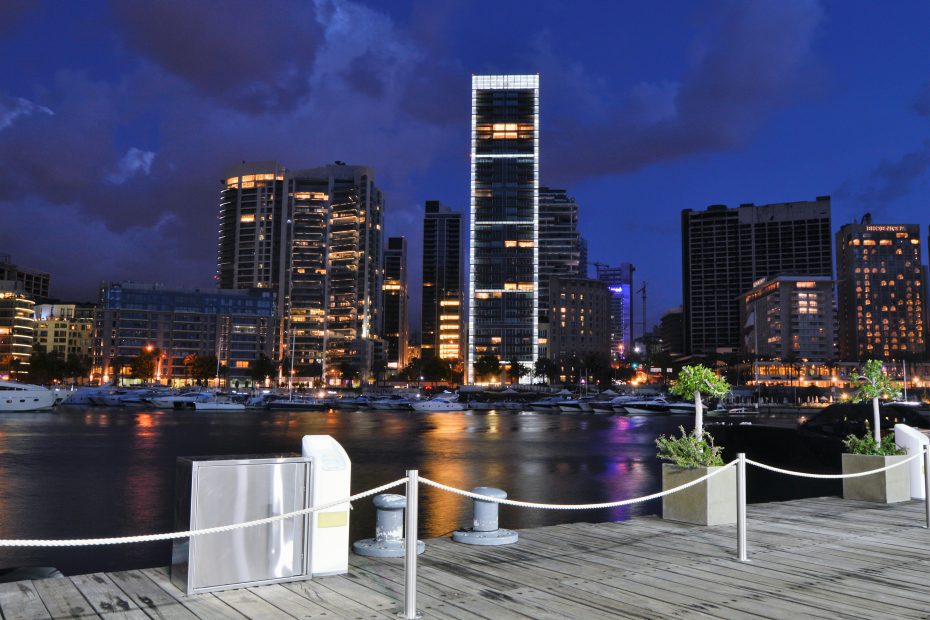Table of Contents
Introduction
Beirut, the capital of Lebanon, has a long and storied history dating back thousands of years. Known as the “Paris of the Middle East,” Beirut is renowned for its breathtaking Mediterranean coastline and vibrant culture. Despite periods of war and instability, Beirut has persevered and remained a cosmopolitan city full of life. From the historic neighborhoods to the modern downtown, Beirut is a captivating blend of old and new. Its streets are filled with culture, art, music, food, and an infectious energy.
Architecture
Beirut’s architecture reflects its rich history as a crossroads of civilizations. The French Mandate period of the early 20th century left behind many iconic buildings with French-style arches, balconies, and windows. Ottoman and Mamluk architecture is also visible in historic mosques, bathhouses, and souks. In recent decades, modernist architecture has transformed the downtown area, with striking examples like the Mohammad Al-Amin Mosque.
Food
Lebanese cuisine is considered among the best in the Middle East. Beirut offers traditional local specialties like kibbeh, tabbouleh, and mixed grills. The street food culture comes alive at night, when vendors sell kaak bread, shawarma wraps, and roasted nuts on bustling corners. Beirut also has a world-class fine dining scene, fusing Lebanese staples with global influences at chic restaurants.
Nightlife
When the sun goes down, Beirut comes alive. The city is synonymous with nightlife in the Middle East. Trendy bars and pubs pack the streets of Mar Mikhael, while rooftop lounges offer panoramic views. For those seeking electronic music and dancing, Beirut’s underground club scene is pulsating and energetic. From intimate gatherings to dance parties till sunrise, Beirut’s nightlife is diverse and lively.
Art and Design
Home to a thriving arts scene, Beirut hosts contemporary exhibitions at galleries and museums like the Beirut Art Center and National Museum. The streets are canvases for talented street artists. Beirut also cultivates famous fashion designers with boutiques in the chic Downtown area. From high culture to street style, Beirut’s art and design scene has broad appeal.
Music
Local music reverberates through the air in Beirut, from the soulful tunes of Fairuz to the pop sounds of Nancy Ajram. Live music venues pack in crowds, while raucous rooftop DJ sets go late into the night. Major international and local festivals like Baalbek Festival and Beiteddine Festival are hosted on grand stages. Music is the lifeblood of Beirut.
Tourism
There is much for visitors to discover in Beirut. Top attractions and landmarks include the seaside Corniche promenade, Mohammad Al-Amin Mosque, Roman Baths Garden, and the National Museum. Shopaholics flock to the chic shopping districts like Hamra Street. Annual festivals and events like Holiday Market and Beirut Beer Festival highlight local culture. Tourism continues to grow steadily in the city.
Diversity
One of Beirut’s hallmarks is its cultural diversity. As a melting pot city, it seamlessly blends Christian, Sunni, and Shia Muslims, along with many other groups. Beirut takes pride in this religious diversity and harmonious coexistence. With immigrants from Syria, Bangladesh, the Philippines, and elsewhere, the city has a welcoming atmosphere for people from all walks of life.
Challenges
Despite its vibrancy, Beirut faces difficulties. Political instability and conflict in the region has at times discouraged tourism and investment. The city has endured economic uncertainty, debt, and high costs of living. In 2020, the massive portside explosion wreaked havoc on the city. Still, Beirut has proven resilient time and again when faced with instability.
Conclusion
Beirut remains a jewel of the Middle East, persevering through ups and downs while maintaining its vibrant spirit. The streets brim with life, music, art and culture fuse, and welcoming communities congregate. If Beirut’s history has shown anything, it is that the city will continue to prevail and rebuild despite challenges it faces. The future still looks bright for this dynamic capital by the sea.
FAQs
What makes Beirut’s culture unique?
Beirut has a one-of-a-kind culture blending European, Middle Eastern, and international influences. It assimilates different religions and ethnic groups more than most Arab cities. The diversity and openness create a vibrant creative culture.
What are the must-see attractions in Beirut?
Top attractions include the seaside Corniche, National Museum, Mohammad Al-Amin Mosque, Jeita Grotto, Sursock Museum, and Beirut Souks. Evening attractions like pubs in Mar Mikhael and rooftop bars are also highlights.
What foods is Beirut famous for?
Iconic Lebanese foods from Beirut include tabbouleh, falafel, shawarma, kibbeh, and hummus. Local desserts like baklava, halva, and rosewater pudding are also popular.
What is Beirut’s art scene like?
Beirut has a thriving contemporary art scene centered around galleries in the Downtown area, as well as street art, modern designers, and museums showcasing Lebanese talent.
What music genres originated from Beirut?
Beirut is known for Arabic musical styles like Dabke and Raï, as well as its underground electronic and club music scene.
